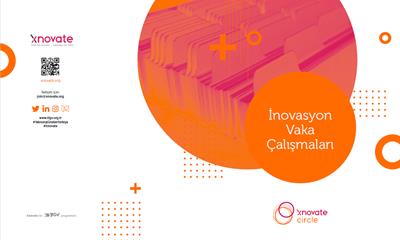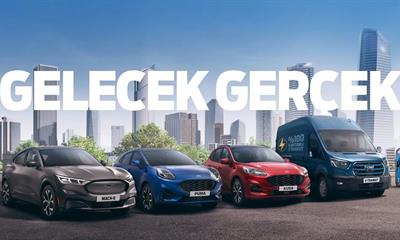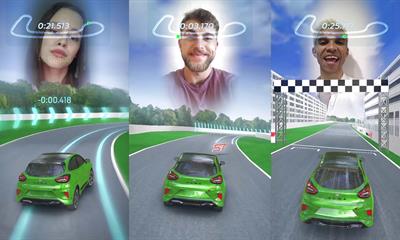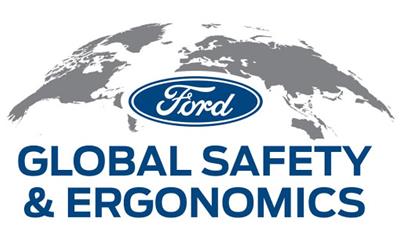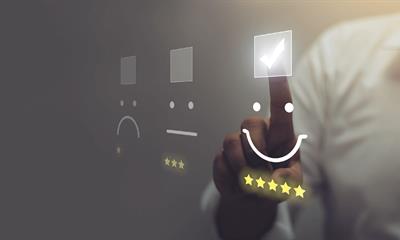
An Inside Story That Livens Us

If you had a superpower that could save a person's life, would you hesitate to use it? We can hear you saying, "I wouldn't hesitate." And what is surprising is that each of us has this superpower! It is actually not super; but it is very natural, and innate, and yes, we all have that power!
The name of this power is the stem cell. Guests of the 'Stories Among Us' series are our colleagues Birol Mutlu, Zihni Fidan and Sinan Karaca. Mr. Fidan and Mr. Karaca are stem cell donors who have managed to touch the lives of two people, their families and loved ones. And Mr. Mutlu is along being one of the thousands of donor heroes who are waiting to be paired to save a human life, also a colleague who puts great effort and time to raise awareness about stem cell donation and transplantation, a pioneer and facilitator to save lives. We hope that this interview with Birol Mutlu, Zihni Fidan and Sinan Karaca will inspire all our readers, revive new lives by creating awareness via learning all the processes we knew wrongly before at firsthand.
Hello, there are two figures here with us who provided health to two lives and another figure that contributed to the realization of these with his work. First, can we get to know you?
Birol Mutlu: Hello there. I am Birol Mutlu. I have been at Ford Otosan since 2000. I am originally from Eskişehir. After working in our Eskişehir Factory for two years, I was transferred to our Kocaeli Factory. I have been involved in social responsibility projects for 10 years. I have carried out and volunteered dozens of projects, the number of which I do not remember. One of these projects was the "Stem Cell" project. It was a project that really touched the human heart, life, and humanity.
Zihni Fidan: Like Birol, I started working in our Ford Otosan Eskişehir Plant in 2000. After working as a maintenance and auxiliary business manager for 18 years, I have been working as a factory management industrial engineer since 2018.
Sinan Karaca: Hello, I am Sinan Karaca, I was born in 1992 in Eskişehir in 1992. I had my degree from Osmangazi University Electrical Electronics Engineering in 2015. After graduation, my first job was Ford Otosan. I worked at Ford Otosan for two and a half years in the Engine Field Factory Maintenance department. Then I switched to the R&D Test center by rotation and I have been in this family for three and a half years. I am currently working as a test engineer.
Our topic is stem cell transplant and donation. How did this issue come to your agenda? Can you tell us a little bit about your work?
B.M.: I encountered this issue in 2018. I actively use social media and I have memberships in charity websites. Of course, I am talking about healthy and effectively managed platforms. One day, while looking at the posts on social media, I saw the plea of the parents of a 1-year-old baby named Yağız. He was experiencing difficulties in the immune system and struggling for a marrow transplant. All started that way.
After that, I started to research what a stem cell is, how it is taken, and in what ways, and which diseases are used in treatment. Then we sprouted this project and have reached to these days. My goal is to enlarge this project further, to go beyond the umbrella of Ford Otosan by obtaining the necessary approvals and permits, expanding this project in Koç Holding, thus benefiting, and contributing many more people.
People are afraid at first when talking about marrow transplants. Unfortunately, there is a very wrong perception. In fact, we set out to break this perception. When you mention marrow or stem cell transplant, most people think that they will lie on the operating table, doctors would enter their waist with the incision and take a certain piece of marrow, and transfer it to the patient lying on the side table. However, these have nothing to do with the practice.
Initially, I thought this too, the name "marrow transplant" is frightening. The Ministry of Health later changed this "marrow transplant" name to "stem cell transplant". It was quite right and the correct decision. I have learned that in the cancer patients if the necessary match with non-blood related people is achieved with over 90 percent; then the patient can return to life and overcome the disease at 80-90 percent. Later, I shared this issue with my own manager and offered to carry it to Ford Otosan with an awareness project that we would collaborate with Red Crescent. None of my managers withheld their support.
Then I went to Red Crescent's Kocaeli Regional Directorate. I explained the details of our project, I told them that we want to take responsibility. Thanks to them, their approach was quite warm, and they explained to us the whole process with details. We met with Red Crescent East Black Sea Region Representative Adem Buğdayoğlu and Central Anatolia Region Representative Nejdet Ayduran and held a short meeting with my field manager and executives. Initially, we created small-sized classes, of course, and then there was no coronavirus in our lives. We informed our colleagues with short meetings, visual presentations, and public service ads, we learned what stem cell transplantation is. We told our friends that it is not done by laying on a table and being cut, that it is collected and transplanted by the Apheresis device, thus the patients can live thanks to it. Red Crescent teams were present in our factory during our training. We did our training with hourly tours; we had 8 to 10 sessions a day.
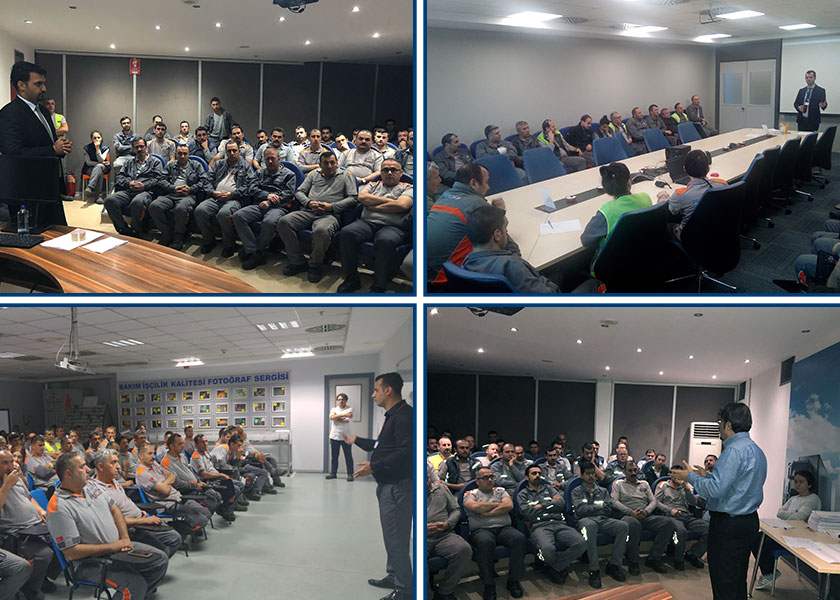
At least one-third of our participating colleagues in our sessions voluntarily agreed to become donors, Mr. Fidan was among them. That day, we asked our friends who accepted to be volunteer donors to fill in the information form about being a Stem Cell Donor. Later, these volunteered colleagues went to the area where Red Crescent teams were present and provided 3 small tubes of blood there. With this blood, they were registered to the stem cell database. That is all for the first step.
The blood you provided is registered in the database. They record your name in the Stem Cell database which the Ministry of Health and World Health Organization have parallel access. You are given an ID and your personal information is kept secret without being shared with anyone until the age of 55.
After the storing process, let us assume that there is a patient in our country or abroad and stem cell is needed for the treatment because the patient cannot produce it or there is leukemia. Unfortunately, 80 percent of this disease hits the 0-10 age group. Since the immune systems are somewhat stronger in adults, circumvention rates are higher, but since the immune system is not strong in children, this disease can have more serious consequences. So, if such a patient needs a stem cell transplant, the hospital treating the patient applies to the Ministry of Health. The Ministry of Health reaches the database. The patient's DNA and blood information are scanned in the records previously registered in the stem cell database. This screening is carried out not only in our country but also in stem cell databases under the umbrella of the World Health Organization worldwide. During this process, it is checked if there is more than 90 percent compliance. We are talking about sort of genetic twins, genetic twins not sharing the same mother and father.
If more than 90 percent match is found, the Ministry of Health reaches the donor through Red Crescent. Red Crescent calls the donor. They inform you that you have had over 90 percent pairing with a patient and ask once again whether you want to exchange stem cells with this patient. At this point, the donor can say "No, I have changed my mind". Since your identity information is not shared with anyone, including the patient or patient relatives, you would not experience discomfort in this regard. In fact, patients and relatives are not informed about the existence of a donor before getting the approval of the donor.
After your approval Red Crescent conveys the file to the Stem Cell Coordination Center of Turkey (TÜRKÖK) of the Directorate General of Health Services of the Ministry of Health, fulfilling its part. Initially, TÜRKÖK teams call the donor and they arrange a full check-up appointment in a hospital designated by the Ministry of Health (Before this was done in 3 hospitals but due to Covid-19, now it can be performed in various university hospitals). The reason for this is that the patient's immune system is not working anyway, and even the slightest infection causes a life-threatening risk. If no risky situation is found because of the check-up, the donor is given an appointment without any further delay.
Stem cell transplantation can be done by three methods. The first type is the navel cord method. It is taken at birth, but it is only allowed in some countries in the world and it does not exist in our country because we do not have a navel cord bank.
The second method is the bone marrow transplant. It is like an urban legend, which makes people afraid. Those stem cells do not wander around in the human body in the blood. They adhere to our hip bone, which is called the pelvic bone. By creation, they only exist as an adherent to our hip bone and around the spinal cord. They do not circulate in the blood in any case. In this second method that we call bone marrow collection, stem cells are collected from the hip bone with the help of a needle if the patient approves. This operation takes approximately 45 minutes -1 hour and is performed under local anesthesia. It is not a preferred method either because some are afraid of the needle or because of the anxiety and false perceptions that it will get into the marrow. Only 5 percent of the donors accept this method.
The third method is the peripheral stem cell collection performed with an apheresis device, it is also the preferred and applied system at the rate of 95 percent worldwide. So far, we have provided stem cells to two patients with this method. This method takes its name from the device itself. You are connected to a machine that looks like a dialysis machine by your arms. The machine pulls your blood from one arm in a very slow manner, without causing any danger for you, without decreasing the blood pressure and glucose. After distilling the stem cells, the blood is given back to you by the other arm. You may ask that the stem cell was supposed to be attached to the pelvis bone, it would not circulate in the blood. 4 days prior to this process, after having a completely clear patient-donor match (which means the patient's health condition and the donor's check-up results are suitable) the donor is given a 4-day injection application, once a day according to the planned time schedule.
The reason for this vaccination is to direct the nerves connecting to the brain and trickle the stem cells to have them circulate in the blood. It is a method that has no side effects and maybe you can feel some temporary joint pain. There is no case reported across the globe about someone got damaged in any way or got permanent damage due to this vaccine. The vaccinations given at the same time for 4 days cause a signal as if there is a wound, a problem in the human body. So, the brain instructs the stem cells to move, to intervene in the issue. The stem cells that fight all kinds of diseases and renews the blood, which we can call as the blood-forming soldiers, leave the bone, and start to circulate in the blood. Unfortunately, these patients do not have these stem cells so they cannot fight diseases. Their blood cannot renew itself, cannot fight the disease. Especially in children with leukemia, their blood is changed at certain periods. If the blood is not refreshed, the patient faces death. It is necessary to provide platelets from the same blood group continuously. Platelets are more common in RH positive blood types, but it is exceedingly difficult to find platelets in negative blood groups. Unfortunately, if it cannot be found after a certain period, the patient is left alone with her/his fate. At this point, donors with over 90 percent compliance are really lifesaving. Because soldier stem cells fight the disease in a different body, multiply by cellular division and often win the fight.
In vaccination, the patient's age and weight are taken into consideration and they take that exact amount of stem cell from you. For example, the patient that Mr. Karaca was a donor was a 110 kg adult, so he gave more stem cells than Mr. Fidan. Meanwhile, Mr. Karaca is around 70 kg and almost 1 million cells were taken from him. There are millions of stem cells in the body of a healthy individual and as I said these cells multiply by divide, so there is no health risk for the donor in giving this amount of stem cells.
Actually, it is a process similar to insemination. Your body continues to produce them because you have the root. And your matched cells make the patient healthy with the same function. In the meantime, when the vaccine given to you has run out of effect, the stem cells circulating in your blood go back to their places in your hip bone and reattach there.

Mr. Karaca, Mr. Fidan, when and how did take that decision? Can anyone decide to be a donor?
S.K.: As for me, the process started as follows; This issue, which I gained awareness upon listening to a conference on stem cell transplantation in our Eskişehir Plant, was the first step that pushed me to become a stem cell donor. I was donating blood regularly to Red Crescent, but I did not have deep knowledge about the stem cell. After the information, I gained triggered the idea of being hopeful for a person, there I gave my blood like everyone else. Like everyone else, I also knew that it is unlikely to match; so, I did not think I would be called for a long time, that I could have touched a person. Not so long after, they called me about 8 months later and I learned by a Red Crescent officer that I was matched with an Acute Lymphoblastic Leukemia (ALL) patient. In a certain age range, every healthy individual can go to the Red Crescent branch and donate 3 tubes of blood to take a step towards becoming a donor.
Z.F.: It was an issue I heard before, but I did not know exactly what it was. I filled the form, gave three tubes of blood. I think it was in December. They called me from Kızılay, from Central Anatolia Region. They said that I could be a hope for someone's life, that there was a match. What I felt was vastly different, impossible to describe. Happiness, sadness, the possibility of giving life to a soul... You give it with this goal anyway, but the theory and the practice really cause totally different feelings. Especially, I did not expect a match in such a short time, of course, that was also a surprise. I have friends around who have been waiting for many years and have not matched yet. Every healthy individual between the ages of 18-55 can be a donor candidate without a problem.
Could you tell us about the process you have experienced from the moment you hear that you have a match?
S.K.: To be honest, when Red Crescent called me and said there was a match, I felt the reflection of many public fears. What are those fears? In fact, they were the first thing that comes to our minds; cases such as anesthesia, surgery, hospital stay... But then, you think that a human soul is in question, you can become life for a person, the facts that pass through your mind are actually just a detail considering the patient experiences, and those fears disappear at the same speed as they come. These disappearing fears leave their place to the eagerness to continue this process. With this enthusiasm, I stated Red Crescent officer on the phone that I wanted to continue the process without hesitation.
I learned that the patient was a Turkish man with ALL born in 1991. A patient a year older than me. I also knew his weight, around 100 kg. I know it for the following reason, the patient's weight is decisive in the number of stem cells needed for transplant. Not much information is shared because the protection of the patient and donor in this process is one of the most important factors. Both Red Crescent and the Ministry of Health work meticulously on this issue and they manage the process completely professionally.
Stem cell transplantation can be done by two methods. The first of these methods is the bone marrow transplant. The second method is referred to as the peripheral method. The doctor of the patient you have matched suggests one of these two methods and the Ministry of Health leaves the final decision to the donor completely. But as a donor, you can transplant with the other method, they do not force you. Only the operational stages of the two methods differ but the number of stem cells collected at the end of the process is the same. With the peripheral method recommended by the doctor; I was vaccinated 5 days prior. After those 5 days, by connecting to the apheresis device and providing the necessary amount of stem cells in 2 hours and 15 minutes in total; I performed my transplant.
I would like to point out that pain may be something that everyone is curious about at this stage. I felt truly little pain during the 4 days I spent in the hospital. The vaccine triggers your body and your joints begin to produce stem cells after a while. So, you feel pain in the hip bone area, joints, and back-waist area. To define this pain, it is like the pain you feel when you do sports after a long period without doing sports. During the process, I never had any pain that would put me in trouble, affect the daily life that I could not bear. Therefore, in the light of the told experiences, anyone who wishes can be a hope for human life without any reservations.
Z.F.: Sinan was our first friend who experienced such a matching and transfer process. I met him when I got matched. The interesting thing is that we work with Sinan in the same place, at the same factory. It is a great chance that both matches come out of this small space. Like a possibility in billions. When we first talked to Sinan, he told the age of his patient. He was an adult patient, and I also thought I was matched to such a person, but when I found out that the patient was a 7-year-old boy who was born in 2013, it was a totally very different feeling. So, he was a kid. Just a little boy. That causes a quite different feeling. Beginning of life... His family, beloved ones... You donate, you transplant to a big family, not just to a person.
Normally my transplant would take place on April 6, but when the current coronavirus showed itself, they delayed the operation for three months. Together, we prayed for our little brother to hold on to life. Emotions turned upside down, that excitement was mixed with fear and anxiety. On the one hand, there was hope… Thank God our little brother holds onto life for three more months. Then the Ministry of Health announced that the transplantation will take place in June. I accepted again. AT first, the doctor of our patient had chosen surgery as a suitable method and I had accepted that method. However, plans changed due to the pandemic, the transplantation was carried out by the peripheral method at Eskişehir Osmangazi University. So, this had become suitable for the patient's health. Maybe it was the last resort, there was no other possible option anymore, and we do not know anything about it.
I started the vaccine 4 days before the transplant. On the fourth day, I was got injected two hours before the stem cell harvesting. I got connected to the apheresis device, the process took about 3 hours. I did not have any problems during this time, there is absolutely nothing to be afraid of. You do not even experience anything like dizziness or weakness. That is how our operations were conducted. And thanks to Birol, he was with us. I always felt his support. I thank him once again here.
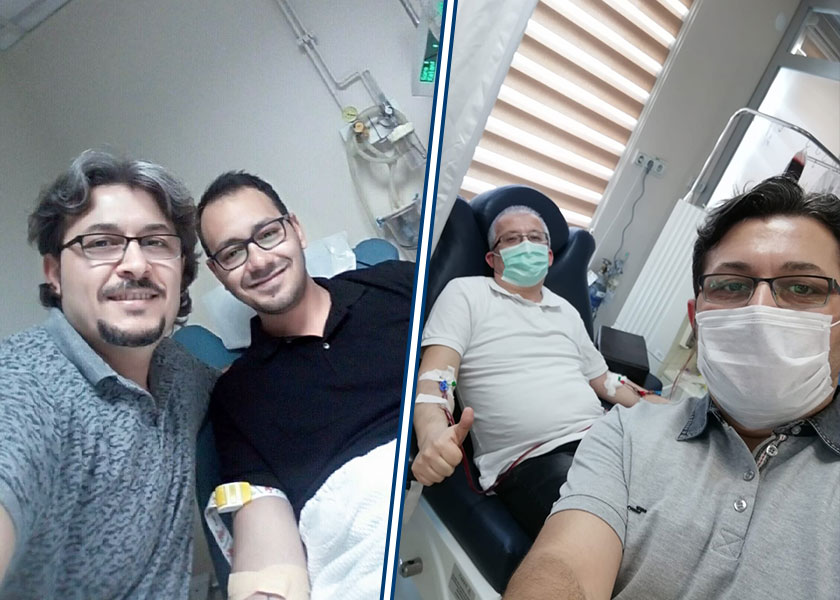
Did you have the opportunity to meet with the patient?
Z.F.: You are only informed about the patient's age and country. They do not provide city information. After 100 days following the stem cell harvest, you would send an email to TÜRKÖK's address with your national ID and learn about the patient's health. After 2 years, if both sides want, they can meet. Within these 2 years, you can exchange letters through the Ministry of Health without your address, name, and personal information.
B.M.: You send the letter to the Ministry of Health; they forward it to the patient. There is a logical explanation for the situation of these two years. One reason for this is to protect the donor and another reason is to protect the patient. This period is applied in the same way all over the world to prevent any monetary relationship between the patient and the donor and their relatives. So, no one would come out and say, "I saved your child's life, so you should give that to us". On the other hand, in the worst scenario, the patient may pass away, and his relatives may accuse the donor. Of course, there might be more reasons. Anyway, this is a decision of WHO and during those two years, they can only write about the patient's situation with hidden identities.
S.K.: During this period, the Ministry of Health does not give permission to meet with the patient for two years. I am still in this period. But after 2 years, I definitely think to contact. It is now 8 months since my transplant. During this time, I wrote 4 times to the Ministry of Health to find out the patient's condition. Within the scope of the confidentiality procedure carried out by the Ministry of Health; they only share information such as "the patient's condition is good". You conduct this communication via e-mail. You also could write letters within 2 years. Of course, provided that there is no personal information in it. Likewise, the patient can answer me if she/he wishes to. I also prepared my letter, I am making arrangements on it because it is an especially important moment for me, the first communication... I am considering sending it this week. After 2 years, I will notify my request to the Ministry of Health, and if the patient wants to meet with me, I will be incredibly happy, I will have a rare and very valuable experience.
What is the process in case a match from abroad occurs, is it necessary to go there?
B.M.: We have 9 matches across Ford Otosan, our success rate is remarkably high. We trained 3650 people: 1148 people voluntarily donated. Over 90 percent of matches occurred in 9 of 1148. One of these 9 matches is Sinan and the other one is Zihni. The third one is another precious brother of ours at our Gölcük Plant, he matched with a child in Italy. On 6 April (on the same date, we share many coincidences) the transfer would take place, unfortunately, it was suspended due to a pandemic. No new transport confirmation has arrived yet. He is also looking forward to it so that he can donate it as soon as possible and keep our little brother alive. Unfortunately, we do not know if that child is alive or not.
Back to your question, when there is a match abroad, the donor here transplants the stem cells in a harvesting center in Istanbul or Ankara. Afterward, it is transported in cold boxes to the patient's location by plane or helicopter within a maximum of 24 hours by procedures performed during organ transplantation. No matter where in the world. Neither the patient nor the donor needs to go to each other's places. It should be difficult to manage this process while continuing your business, after all, 4 days of vaccination, transplantation afterward, etc.
How do Ford Otosan and other companies approach these permissions?
B.M.: Let me tell you if there is a match and the date is decided, then TÜRKÖK engages. The top manager of the workplace that donor works, gets this info from the donor. And then the Ministry of Health sends a notification to that workplace business. They also notify about the date of the process. The donor is considered to be on paid duty leave from the start of the vaccination to the transfer date. This is a direct government-issued permit. Also, for example, if the donor needs to move to another city, let us say that the vaccination and transfer will be in Ankara, but the donor is in Tekirdağ, then the state hosts the donor and his companion in Ankara at a 4 or 5-star hotel for 4 days. This is met by the Ministry of Health. After the vaccination is over, the TÜRKÖK team provides transportation to the door of the donor's house.
Z.F.: There is something I would like to add in this regard. I would like to thank our factory management for this matter. When the permissions regarding this transfer sent by the Ministry of Health, and due to the pandemic, they gave me a special work from home permission, and I am still at home. Thanks to our managers and doctors, they approached with awareness and helped me to work from home in order to avoid any problems preventing transplantation.
Can you share your reactions from your environment after learning about your match? Mr. Fidan, especially you exactly come across the pandemic period, have you ever had concerns?
Z.F.: My determination has not changed from the start to the end of the waiting period due to the pandemic. Of course, my elder parents did not know exactly what this transfer was due to their age. We were telling them, but they always perceived it as something different from what they heard from the past, from around. But then we explained it thoroughly, then they said it is okay, it is a merit and they stood by my side.
But of course, motherly love is different, she wanted to come to the hospital with me. But I rejected it due to the virus. When I returned home, I saw mom waiting for me, she came all the way from our village, she could not feel comfortable without seeing me. After she saw me healthy, she returned with joy. On the other hand, my son was telling every person he met that his father would save a life… It is a quite different feeling to hear this from the life you gave yourself…
S.K.: My mother was the most concerned when I told my family. After giving answers to the questions and concerns that my mother had in mind, we started to talk about this topic at home all the time. This time, the issues on our family agenda were replaced by empathy for the patient and her/his family. We constantly talked about their situation, their feelings on this issue. Considering the patient and his family, who knows how happy they were while we were having such emotions... I definitely cannot describe the spiritual pleasure of this feeling.
When I explained that I would be a donor with my managers and friends, I realized that everyone was sensitive about stem cell transplantation, and they happily wanted to be involved in this process if they had the same situation, and I felt their support to the end. I would like to thank them all...
Can you donate more than once?
Z.F.: When the transfer is completed, you become passive for 1 year in the system. If the donor wants to continue donating after 1 year, she/he turns into active position. No need to go back and give 3 tubes of blood. If possible, I would like to donate my stem cells if there will be a match again after 1 year.
S.K.: My texture sample is already in the data banks of TÜRKÖK. If another match happens, they will let me know. If there is a match, I will accept it without hesitation. I would also like to add that, in addition to a new patient, if the current patient that I transplant for becomes in need again, they would contact in the same way. If that happens, I will gladly perform the stem cell transplantation immediately.
Thank you very much for enlightening us, is there any other topic you would like to share with our prospective donor candidate followers?
B.M.: Unfortunately, the number of donors in our country with a population of 81 million is around 600 thousand. There are many lives to save and we need to reach more people to increase our chances of saving them. We have come a long way on this path, but of course, it is not enough. We will reach more people through you and we will work for this awareness in other companies under the umbrella of the holding. I am always willing to carry a flag at the front, as long as we save lives.
S.K.: I wish I had gained this awareness before and I could do stem cell transplantation at an earlier age. Saving a person's life with such an easy process is like a miracle. But it is not a miracle, it is a fact. And it is in our hands to live this reality and help others to live it. This experience was the turning point of my life. The only thing I would suggest is to get rid of your fears, be brave, and act. If you still have questions, please talk to someone who experienced this process. You can contact me via interview and ask any questions you want. I will gladly help.
Z.F.: There is an indescribable feeling of saving a life, being hope for a soul and beloved ones. If you are a healthy individual over 18, I recommend you experience this feeling without fear.
